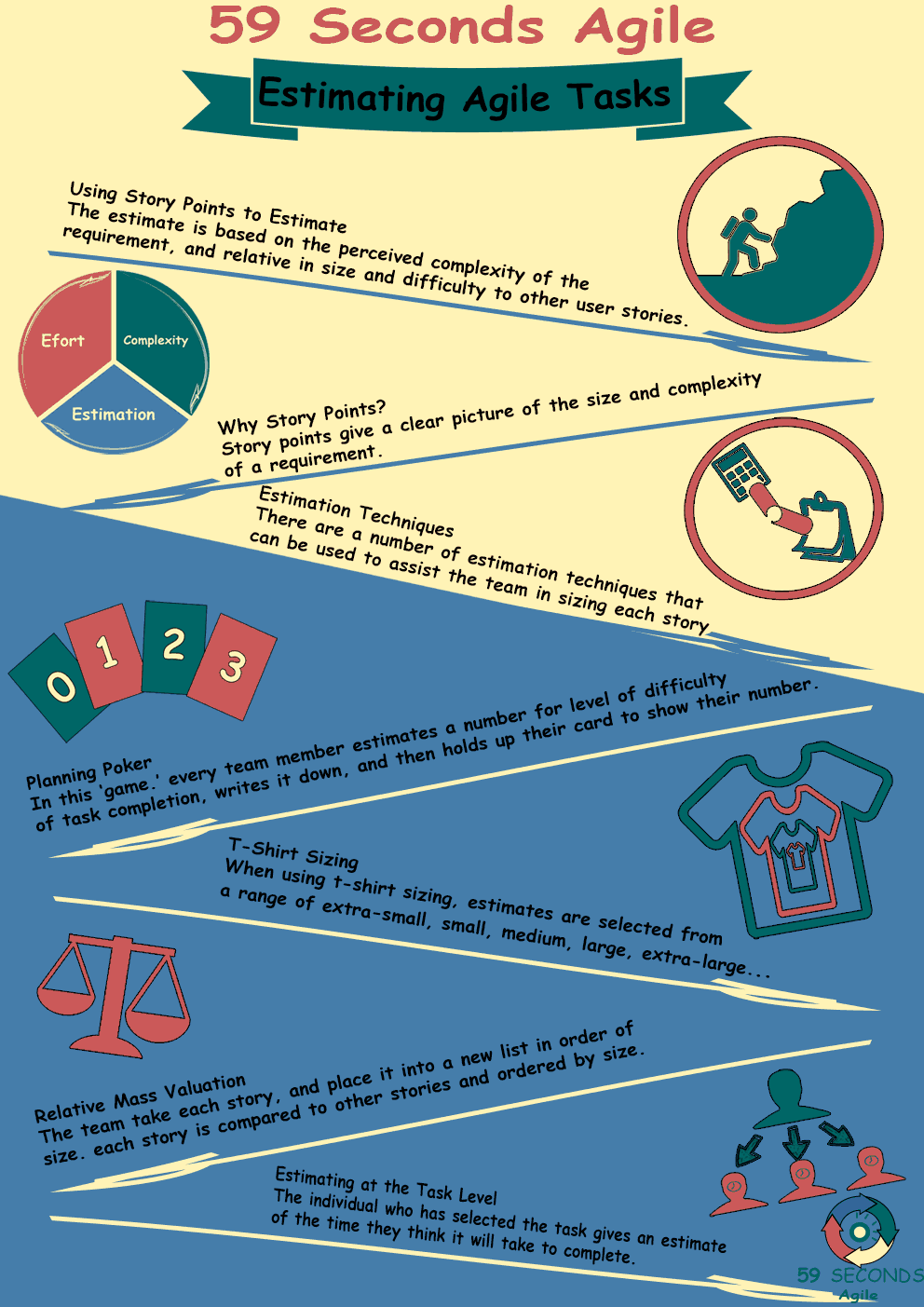Estimating Techniques
A 59 Seconds Agile Training Video
Continue to Part 2 Below
Estimating Techniques in Scrum
A 59 Seconds Agile Article
This article provides an ‘Introduction into Estimating Techniques’ and looks to discuss the different approaches to estimation and the benefits of each approach.
Estimating Techniques
What is the purpose of estimating user stories?
The subject of estimation gives rise to some heated debates among Agile practitioners. There are those who say that estimation wastes time and should be eliminated from planning, and those who believe that estimates provide a lot of value to the planning process. Here we will focus on the value of estimating to the planning process and the estimation techniques available.
How do you plan how long each user story takes to develop?
User stories act as a bridge for describing and communicating requirements to the stakeholders. Presenting the user’s desires allows the business team to create a project vision statement, and to define the development team goals so that they align with a common interest: the user.
When creating user stories, it is important to make the stories short, not exceeding a post-it note length. These stories should also be written in the voice of the user, so that it is clear to both the business and the development team what the user wants and why they want it.
Once user stories have been formulated, the three template elements can be translated into simplified definitions of project, product, and software requirements. The development team will then be responsible for using code to meet the requirements defined by the user stories. While there are different approaches to creating user stories, there are also different ways to estimate user stories.
Continue Reading —> Next
Estimating Techniques
A 59 Seconds Agile Video Animation
Continue Reading —> Next
User Stories Applied
A 59 Seconds Agile Book Review
User Stories Applied by Mike Cohn is one of our favourite books on Agile User Stories. The book starts with an overview into user stories, and details what a user story is and the different aspects of them. He then discusses how to go about writing a user story, and provides details of the INVEST criteria that can be used to determine if the story is meeting all of its objectives. Next Mike gives an in depth discussion of who user stories are written for and where to begin when gathering the details for them. The book then discusses acceptance testing user stories, including how to go about specifying these criteria and the responsibilities of the development team and customers during this process.
Continue Reading —> Next
Estimating Techniques
A 59 Seconds Agile Infographic

Continue Reading —> Next
Agile Scrum Master Training Course
Our Favourite Agile Books
We found these books great for finding out more information on Agile Scrum:
Continue Reading —> Next


